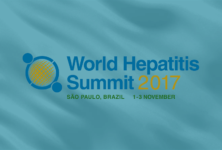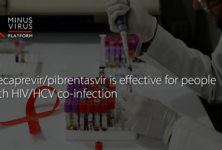The success of recent local and state initiatives to end HIV as an epidemic will hinge on community mobilization efforts to inspire engagement in care and services, along with meaningful involvement at all levels of advocacy and policy, according to Community Mobilization: An Assessment of Mechanisms and Barriers at Community-Based and AIDS Service Organizations in Nine U.S. Metropolitan Areas, a new report by Treatment Action Group (TAG).
“So much of what we have gained in combatting HIV, including prevention and treatment research, comprehensive health care programs and insurance coverage, and community-based organizations, is the product of communities that mobilized to overcome government indifference and unresponsiveness,” said Mark Harrington, Executive Director of TAG. “The importance of community mobilization in response to the HIV epidemic cannot be overstated, particularly as we prepare to defend a number of federal protections and policies that are critical to people living with HIV. Any retreat in our hard-won federal policies required to meet the needs of people living with HIV will be a significant blow to our efforts to end the epidemic and must be met with fierce community resistance.”
The work of AIDS service organizations (ASOs) and other community-based organizations (CBOs) is often driven, at least in part, by community mobilization—capacity-building and engagement processes to foster participation and leadership in strategic responses to HIV in local communities. Although HIV community engagement and mobilization work in low- and middle-income countries receive considerable funding, research, implementation, and support, similar attention to the value of community-mobilization work conducted and facilitated by organizations in the United States is lacking.
“Documenting the history, strategies, and outcomes of community mobilization is essential to all manner of ending the epidemic—whether we’re talking prevention programs, health care access, or the larger political environment,” said Kenyon Farrow, TAG’s U.S. and Global Health Policy Director and the project lead. “This is particularly true in the current context of shifts in funding priorities ushered in with the Affordable Care Act; failures to expand Medicaid; as well as a number of emerging funding and policy threats under the Trump Administration and 115th Congress—both are proposing to repeal the ACA and drastically cut access to critical social safety net programs at this very moment.”
The purpose of this report, which summarizes a three-year effort to more fully elucidate the mechanisms of HIV community mobilization in nine high-prevalence metropolitan areas and to more fully understand the myriad mechanisms of, and barriers to, community mobilization work in the United States is threefold:
- To disseminate examples of community mobilization as an initial step in developing a more robust mechanism for ASOs, CBOs, and advocacy groups to access and utilize critical information regarding community-mobilization mechanisms and outcomes in the United States
- To aid in developing research questions and to shape the methodologies needed to strengthen the evidence base necessary to support the effectiveness of, and investments in, community mobilization, notably its effect on social, behavioral, structural, and biomedical HIV response outcomes
- To galvanize the advocacy required to advance federal, state, and local policies and inform funding streams required to support community mobilization as an essential aspect of the ongoing response to the domestic HIV epidemic
“Efforts are underway to end the HIV epidemic in several U.S. states, counties, and cities,” said Tim Horn, Deputy Executive Director of HIV and HCV Programs at TAG and a co-author and co-editor of the report. “Understanding the mechanisms, facilitators, and barriers of effective community mobilization will be tremendously valuable for determining how to best maximize community leadership and engagement toward developing and implementing successful epidemic-ending strategies, particularly in the face of significant federal challenges that lie ahead.”
The findings of the report include key recommendations to public and private funders, capacity-building institutions, CBO/ASO program staff, and community activists on the critical components needed to better cultivate, innovate, implement, and evaluate community mobilization efforts. The report primarily focuses on community mobilization geared toward increasing the utilization of services by the communities most impacted by the epidemic. Also included in the report are discussions of mobilization efforts to foster community organizing, activism, and advocacy to change the social, economic, and political environments that currently drive disparities in testing, access to treatment and care, and viral suppression.
“TAG believes that it is essential to underscore the importance of community mobilization to ensure that it remains a cornerstone of the continued response to the HIV/AIDS epidemic in the U.S.,” said Farrow. “The realities of the burgeoning domestic epidemic—in which marginalized populations remain disproportionately affected by HIV/AIDS, less likely to access and benefit from state-of-the-art prevention and care services, and remain underrepresented in policy development and planning efforts—demand this. Given our current political environment, we don’t have another choice.”


 ПОИСК ПО САЙТУ
ПОИСК ПО САЙТУ  поиск по ресурсному центру
поиск по ресурсному центру 



